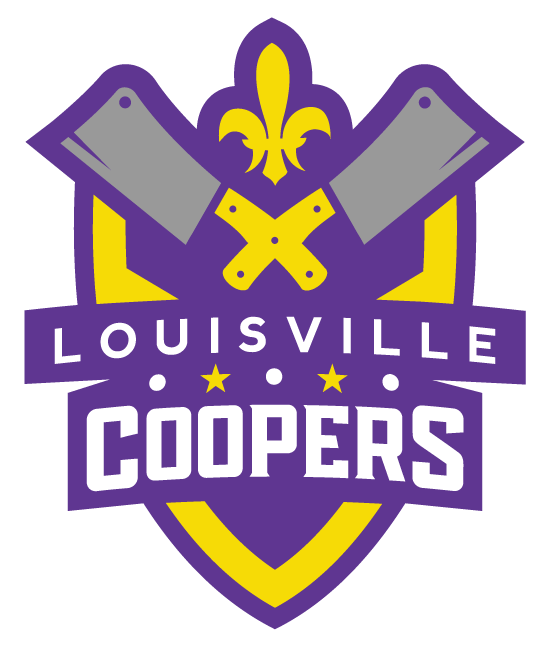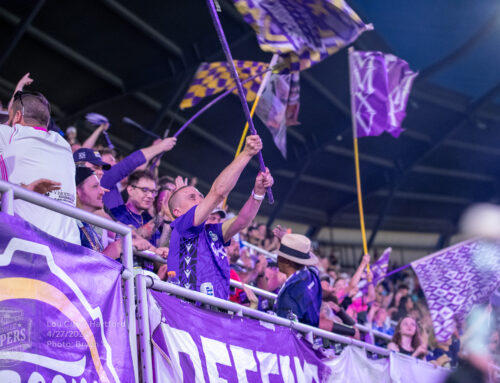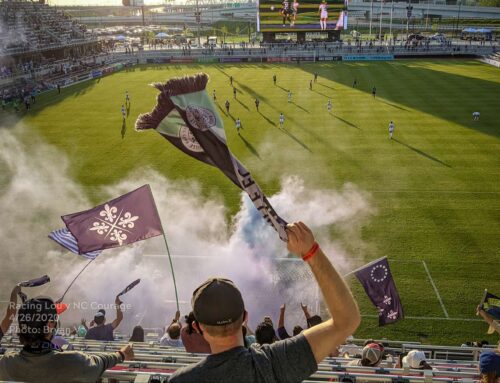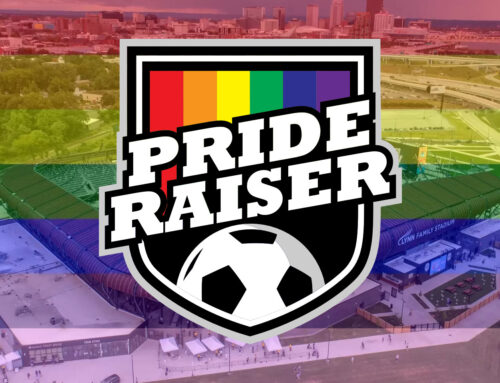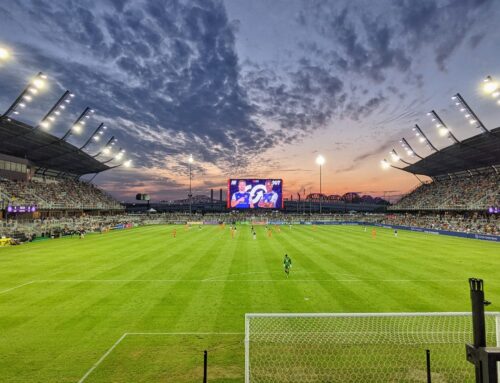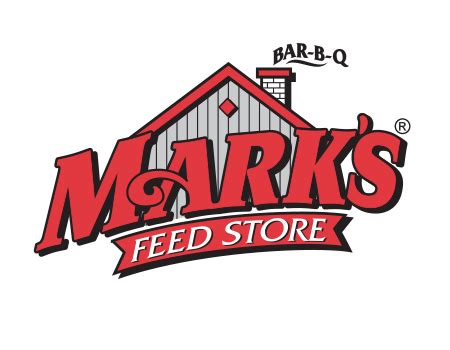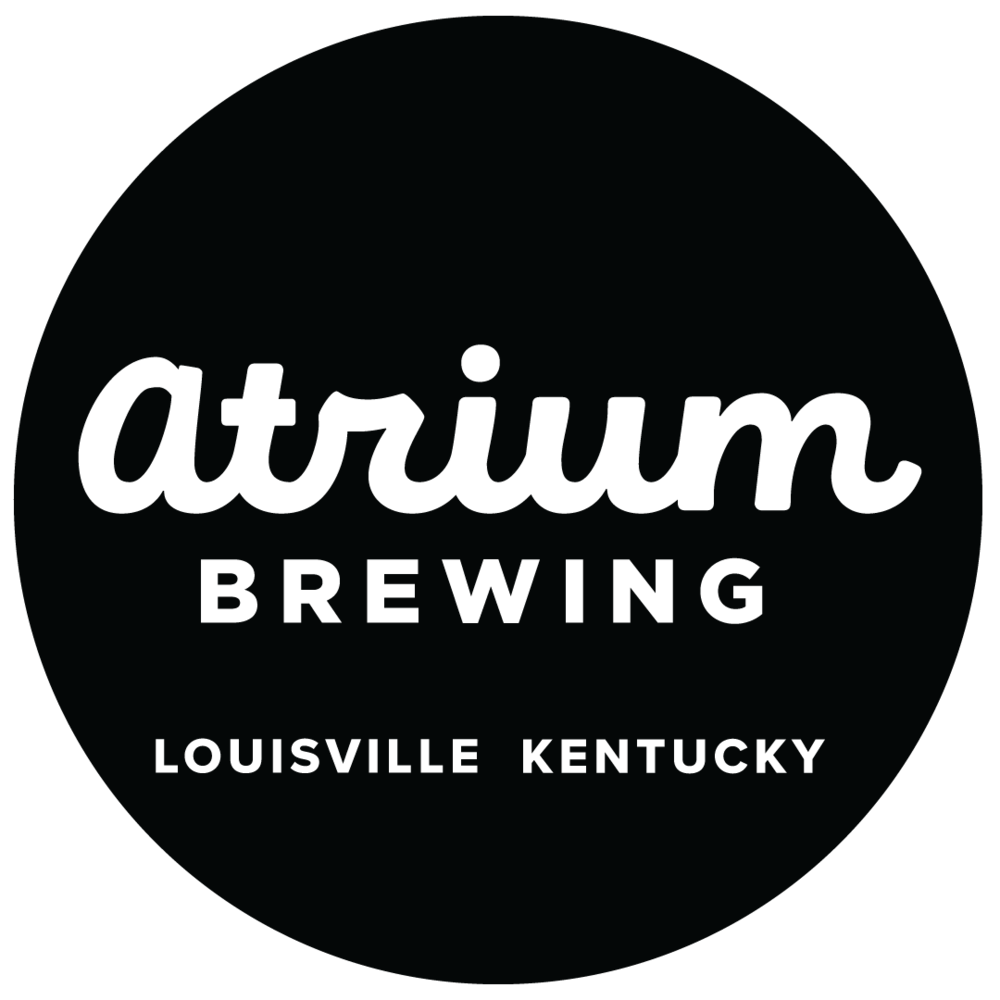Welcome new www.louisvillecoopers.com writer Andrew Oost! Andrew, along with lots of others, will be a contributing writer for us all season. If the rest of his efforts are anything like his first, we’re all in for a treat.
Louisville City’s proposed stadium is the single most important decision that the club will ever make. Once the decision to proceed with construction is made, it is concrete in ways more literal than the actual foundation. We are planting our flag, and claiming a dozen or so acres in our beloved city as our purple homeland.
The club is already deep into the site selection process, and reportedly close to an announcement, so I won’t waste time debating what may hopefully be a done deal by the time you read this. Instead I’d like to focus on the design and aesthetics of the stadium, and how best to sell the idea to the uninitiated. LCFC and it’s supporters are going to need to be very good salespeople the city or the state to buy in to this project, not to mention corporate investment.
Building the stadium is going to take considerable amounts of political finesse and salesmanship. Selling it as merely a ‘soccer stadium’ will not work. It must be something much more if it is to be supported by our politicians, business leaders, and more importantly, the community at large.
The stadium must be a ‘venue’ first and foremost, and not just for the 15-20 LCFC games it will host per year. It needs to be a home for concerts, festivals, high school football and soccer games, youth soccer tournaments, political rallies, monster truck rallies, weddings, funerals, conventions, WHATEVER! The point is that the stadium needs to be well used and well loved, and seen by Louisvillians as a community asset even if they never buy a LCFC ticket.
The Stadium Feasibility Study from August 2016 found that non-LCFC events hosted at the stadium could bring in approximately $323,000 annually, through concessions and rental fees. They were basing this number on the very conservative estimate of 10 ‘other’ events per year. I think in actuality, the number of ‘other’ events could and should be much higher.
Aside from being a sports venue, the biggest selling point for the new stadium is its ability to host concerts. As a big fan of live music, I’ve often lamented the fact the Louisville lacks a large outdoor music venue. Iroquois Amphitheater is absolutely amazing, but with a capacity of 2,400, the types of artists and events it can accommodate are limited. Cincinnati, Indianapolis, Nashville, and St. Louis all have large outdoor music venues that host dozens of shows every year. Louisville misses out on a lot of live music because we don’t have a viable outdoor music venue, especially during the summer months when so many big name bands and touring festivals are on the road.
A stadium is not an amphitheater, in that it is not generally built with acoustics and sightlines for concerts in mind. However, there are examples of places that have more or less pulled off the stadium/concert venue hybrid. Mapfre Stadium, home of the Columbus Crew, has a stage built into one end of the stadium. Toyota Stadium in Frisco, TX, home of FC Dallas, has the same setup. During soccer games, the stage can be used as sort of standing room area with a beer garden, or perhaps a kids zone, similar to what exists at Slugger. If there is a high demand for tickets for a given game, bleachers can be erected on the stage to further the capacity, as is done in Columbus for US National Team games.
As far as what the stadium should look like, there are several recently-built examples in the US that could serve as a model for the future LCFC stadium. The Stadium Feasibility Study dedicated an entire chapter to “Soccer Specific Stadium Case Studies”. WakeMed Soccer Park (North Carolina FC, NASL), RGVFC Stadium (Rio Grande Valley, USL), and Rhinos Stadium (Rochester, USL) are all fine examples of modern soccer stadiums, with capacity of around 10,000. However there is one stadium that I will put forth as easily the best of the bunch, and one that we would be wise to emulate: Toyota Field (San Antonio, USL).
This stadium is gorgeous. It seats 8,296 for soccer, and up to 13,000 for concerts and festivals. It was built for $24 million in 2013. The design of the stadium is such that can be expanded in phases to a capacity of 18,500, should the need arise. Take a look at the renderings below, and note that the stadium actually gets more attractive with every phase of expansion.
And while we’re “borrowing” ideas from other stadiums, take a look at what our former affiliates in Orlando. They’ve built the a “safe-standing” supporters section, in which “the stand has been built as steep as possible, with a low flat roof to retain the sound… Instead of seats, each row as a rail that provides safety as well as a cup holder for drinks.” The Orlando City FC stadium is shaping up to be the best in MLS, so we would be wise to look to them as an inspiration.
Another MLS stadium that got everything right is Avaya Stadium, home of the San Jose Earthquakes, which opened in 2015. One unique design element is that the luxury boxes are at field level, which is something I’ll probably never enjoy, but is cool nonetheless, and could be appealing to deep-pocketed luxury box folks. The other is the hilariously named LOBINA (Largest Outdoor Bar In North America), a massive bar at one end of the stadium. Having something like this would be great on game days, but its real appeal is that it could double as an event space for weddings, corporate events, private parties, etc. Event spaces are big business, and a great way keep the stadium occupied and profitable for many of the 345 days per year when there isn’t a Louisville City game.
The idea that a venue needs to be versatile and have multiple income streams is not new or innovative, and I don’t presume to suggest that it hasn’t already been considered by the ownership group. I’m merely pointing out the myriad of exciting possibilities that exist. The sooner we can create the narrative that the stadium will serve multiple interest-groups throughout the community, the better chance we have of getting the critical mass we are going to need to make this project a reality.
Now if the team would only come out and tell us where they planned to build it, we could all start to get really excited! Let’s all get ready for another rowdy season at Slugger, which, to be fair, is a fantastic place to temporarily call home. I for one, can’t wait. C’MON CITY!
